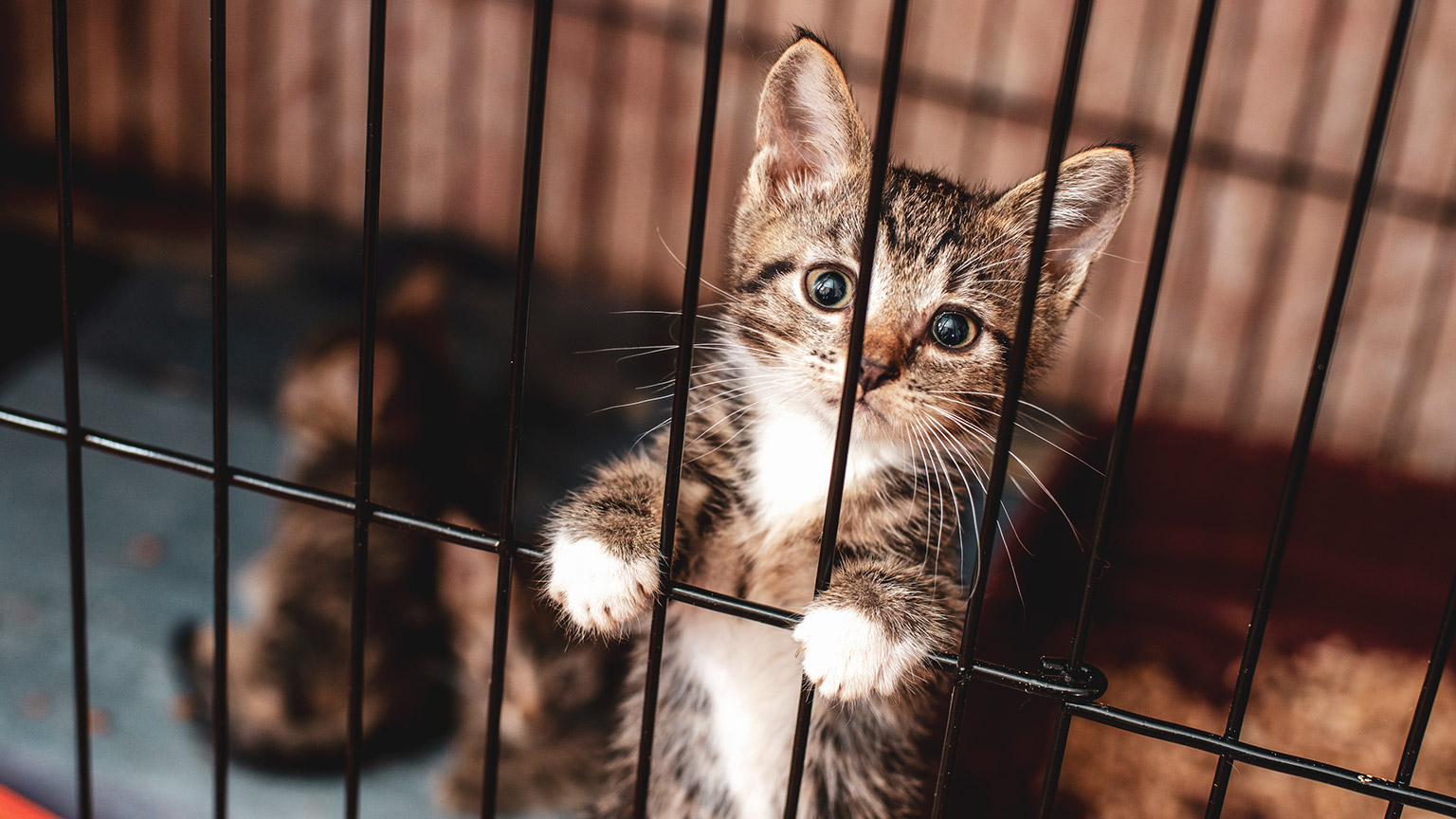Before you learn how to assist in the health care of animals, it is important to remember the basic principles of animal welfare and ethics.
Animal ethics
Ethical management and handling of animals are critical to the animal care industry. As an animal carer, your responsibility is to behave ethically when working with animals. You can think about ethical behaviours as ‘doing the right thing’ or ‘doing what is best’ for the animal.
You can be confident that you are upholding animal ethics if you follow the principles of animal welfare.
Principles of animal welfare
There are eight key principles of animal welfare.
- Animals should not suffer from prolonged hunger
- Animals should not suffer from prolonged thirst
- Animals should have a comfortable environment
- Animals should have enough space to be able to move around freely
- Animals should be free of physical injuries
- Animals should be free of disease
- Animals should not suffer pain, fear or stress
- Animals should be able to express normal, non-harmful, social behaviours.
In this module, your focus is on:
- providing the animal with appropriate care so that they:
- are free of injury and disease
- do not suffer unnecessary pain, fear or stress.
- conducting safe, low stress and humane handling and restraining techniques.
The following table summarises the principles relevant to this module and how you can uphold them in the workplace when you assist in the health care of animals.
| Principle | The animal should have access to: | As an animal carer, you should: |
|---|---|---|
| Animals should be free of physical injuries |
|
|
| Animals should be free of disease |
|
|
| Animals should not suffer pain, fear or stress |
|
|
Knowledge check 1

When you assist in the health care of an animal it is vital that you have a clear understanding of what you need to do. The health and well-being of that animal are your responsibility, so make sure you listen carefully when you are given instructions and ask questions to clarify and confirm when you are unsure. If you do not follow instructions appropriately, it may cause unnecessary pain and stress to the animal or result in injury for you or the person you are assisting.
Active listening skills
Active listening means giving someone your full concentration and to pay attention to more than just the words they are saying. In other words, an active listener takes in non-verbal cues, such as body language and tone of voice, as well as the verbal message.
Active listeners use verbal and non-verbal signs to indicate they are listening actively. In the article, ‘What Is Active Listening?’, Cuncic (2022) suggests the following seven key active listening techniques:
- Be fully present. Don’t be distracted by other people or your surroundings. Put down your phone and concentrate solely on the speaker!
- Pay attention to non-verbal cues. What does the tone of voice, the speed of speech and the posture of the speaker tell you about the importance or urgency of the information they are sharing?
- Keep good eye contact. Maintain eye contact 50-70% of the conversation but only hold contact for four to five seconds at a time. Any more starts to feel a bit awkward.
- Ask open-ended questions. Open-ended questions require more information than just a ‘yes’ or ‘no’ response. Open-ended questions show that you are paying attention and can help you get the specific information that you need.
- Reflect what you hear. Summarise or paraphrase what the other person said and repeat it back to them. This gives them a chance to clarify or correct you if you have misinterpreted them.
- Be patient. Don’t interrupt, finish the other person’s sentences or change subjects abruptly.
- Withhold judgement. Remain neutral and avoid judgemental responses or reactions.
The first five techniques are particularly important when receiving instructions, asking questions or confirming information with your supervisor.
Open-ended and closed-ended questions
Asking questions is a fantastic way to find out information. Questions can be classified into two broad types:
- Closed-ended questions
- Open-ended questions.
Closed-ended questions can only be answered by a very narrow range of possible answers. Typical closed-ended questions can be answered with a simple ‘yes’ or ‘no’ or a small piece of specific information.
Examples of closed-ended questions include:
- Which animal is next for treatment?
- Is this the correct piece of equipment to use?
- What health care task is needed for this animal?
Close-ended questions are also great for clarifying information or confirming that you have correctly understood an instruction.
Open-ended questions typically begin with words or phrases such as ‘what’, ‘why’, ‘describe’, ‘how’ and ‘tell me’. They require detailed responses and are a great way of finding out new information.
Some examples of open-ended questions include:
- How can I tell the difference between ticks and fleas?
- Why is it better to use a scrub top than an apron in this situation?
- What is the best way to restrain a fractious cat?
Funnelling
A good technique to use when seeking instructions or advice from your supervisor is to use ‘funnelling’ to question, clarify and confirm.
Start with broad, open-ended questions to gain the information you need. Then, use close-ended questions to learn specific details, clarify your understanding and confirm the instructions you have received.
Confirm the animal and the health care task

Before proceeding with any procedure or treatment for an animal, there are three key steps you should follow:
- Identify the animal to be treated
- Identify the health care task for and welfare needs of that animal
- Confirm the animal and health care requirements with your supervisor.
Identify the animal to be treated
To ensure they receive the appropriate treatment, you need to identify the animal before you proceed with any procedure or treatment. Methods of identifying animals include:
- Confirming the identification of the animal with their owner
- Confirming breed, sex, colour and markings with computer records or the cage card
- Checking the microchip number against computer records or the cage card
- Checking ear tags, tattoos and other markings against the cage card, history or admission forms
- Checking for a response when their name is called.
You will likely need to use a combination of methods to confidently identify the animal.
Identify the health care task and welfare needs
Once you have identified the animal, determine the health task required as well as any welfare needs specific to that animal. The patient’s file, cage card or booking details should contain information about any treatments or medication required by the animal.
Being considerate of an animal’s welfare needs will likely reduce their stress and make them easier to handle. The patient’s history in their file should also provide details about any known welfare needs for the animal. Significant welfare needs may also be noted on the cage card.
Common welfare needs you should consider include:
- Chronic illnesses or injuries that may affect the way the animal needs to be handled. For example, an arthritic patient may have very tender joints.
- Known stressors to avoid. For example, an animal may be afraid of males, so should be handled by female staff if possible.
- The tendency for aggression in particular situations. For example, a cat that lashes out when confined in a cage but is content to be carried in your arms. “Less is more” may be noted on the cage card in this instance.
- Responsiveness to treats and distractions. For example, an animal that only requires minimal restraint if provided with food. “I like treats” may be noted on the cage card for this animal.
Confirm with your supervisor
Talk to your supervisor or other appropriate staff members to find out any information you can’t locate on your own and use your active listening skills to clarify and confirm your understanding. If you have identified the animal, its welfare needs and the health care task yourself, double-check the information with your supervisor.
Confirmation ensures that the correct animal receives the correct treatment, upholds the animal welfare principle that animals should not suffer pain, fear or stress because of unnecessary handling or medical procedures, and reduces risks to the safety of staff and the general public.
Now is also the time to confirm that you know what equipment, medications and personal protective equipment (PPE) are needed to complete the task safely and appropriately. Check with your supervisor so that you are fully prepared for the task at hand.
Common disease and treatment abbreviations
When assisting in the health care of animals, it is important to recognise and understand the common industry standard abbreviations used.
The following tables list some of the most common abbreviations used related to health care in animals. You will find a more comprehensive list of abbreviations and key animal care terminology in the introductory module for this course.
| Disease and injury abbreviations | Description | Disease and injury abbreviations | Description |
|---|---|---|---|
| BIV | Bovine immuno-deficiency-like virus | fLUTD | Feline lower urinary tract disease |
| BHV | Bovine herpesvirus | FRV | Feline rhinotracheitis virus |
| BLV | Bovine leukemia virus | fx | Fracture (break in bone or tooth), also written as # for a broken tooth |
| BRD | Bovine respiratory disease | GDV | Gastric dilatation-volvulus |
| Canine Cough | Colloquialism for a group of contagious bacterial and/or viral diseases that cause a cough in dogs. Also referred to as Kennel Cough by some vaccination brands. | GI | Gastrointestinal (tract) |
| CBA | Cat fight bite | HBC | Hit by car |
| CDV | Canine distemper virus | HW | Heartworm |
| CFA | Cat fight abscess | IBD | Inflammatory bowel disease |
| CPV | Canine parvovirus | IBD | Inclusion Body Disease (for snakes) |
| DJD | Degenerative joint disease | ICH | Infectious canine hepatitis |
| EHV | Equine herpesvirus | IVDD | Intervertebral disc disease |
| EIAV | Equine infectious anemia virus (a lentivirus) | KBH | Kicked by horse |
| FAD | Flea allergy dermatitis | NAD | No abnormalities detected |
| FCV | Feline calicivirus | OA | Osteoarthritis, degenerative joint disease |
| FeLV | Feline leukemia virus | PBFD | Psittacine beak and feather disease |
| FIA | Feline infectious anemia | PRA | Progressive retinal atrophy |
| FIP | Feline infectious peritonitis | RCD | Rabbit calicivirus disease (rabbit haemorrhagic disease) |
| FIV | Feline immunodeficiency virus | UTI | Urinary tract infection |
| Common procedure, vaccine and treatment abbreviations | Description | Common procedure, vaccine and treatment abbreviations | Description |
|---|---|---|---|
| Abs | Antibiotics – drugs used to treat bacterial infections | BB | Bordatella bronchiseptica (vaccine) |
| C3 | Canine 3 vaccine - Distemper, Hepatitis and Parvovirus | C4 | Canine 4 vaccine - Distemper, Hepatitis, Parvovirus and Parainfluenza |
| C5 | Canine 5 vaccine - Distemper, Hepatitis, Parvovirus, Parainfluenza and Bordatella bronchiseptica | C7 | Canine 7 vaccine - Leptospirosis, Distemper, Hepatitis, Parvovirus, Parainfluenza and Bordatella bronchiseptica |
| EAGs | Express anal glands or empty anal glands | F3 | Feline 3 vaccine - Enteritis, Rhinotracheitis, Calicivirus, Chlamydia |
| F4 | Feline 4 vaccine - Enteritis, Rhinotracheitis, Calicivirus or Feline 4 vaccine - Enteritis, Rhinotracheitis, Calicivirus, Feline Leukemia | F5 | Feline 5 vaccine - Feline Panleucopenia Virus, Feline Herpesvirus, Feline Calicivirus, Chlamydophila psittaci and Feline Leukaemia Virus |
| NSAID | Nonsteroidal anti-inflammatory drug, these are drugs commonly used for pain management. Should never be used in conjunction with Steroids. In most cases must be given with food. | Spey | Ovariohysterectomy – Surgical removal of ovaries, fallopian tube, uterine horn, and body. Desexing of female. |
| r/s, s/r, s/o | Remove sutures e.g., r/s 10 days |
Knowledge check 2

In the animal health care industry, there are several common health maintenance issues and preventative treatments that are specific to each class of animal.
The six classes of animal are:
- Invertebrates such as insects, snails and shrimp.
- Fish such as angel fish, lionfish and guppies.
- Amphibians such as frogs, toads and salamanders.
- Reptiles such as snakes, lizards and turtles.
- Birds such as finches, parrots and chickens.
- Mammals such as cats, guinea pigs and cows.
All health care issues can be classified as either infectious or non-infectious. Many health concerns, whether infectious or non-infectious, have preventative treatments.
Infectious disease
All animals are susceptible to infectious disease. Infectious diseases are caused by pathogens such as bacteria, fungi, protists, parasites, and viruses. Infectious disease can spread quickly between different individuals and sometimes even between different species. Diseases that can spread from animals to humans are called zoonotic diseases.
The following table lists some common infectious diseases for each of the classes of animal you will likely work with.
| Animal Class | Common Infectious Diseases |
|---|---|
| Fish |
|
| Amphibians |
|
| Reptiles |
|
| Birds |
|
| Mammals |
|
Modes of transmission
A defining characteristic of an infectious disease is that it can be spread from one individual to another. The ways in which the pathogens are spread are called modes of transmission.
There are two broad modes of transmission, with more specific methods within each category:
- Direct transmission occurs by coming in contact with an infected animal or its blood and other bodily fluids, such as through an infected animal biting or scratching another, touching open wounds or handling faeces.
- Indirect transmission occurs by the infected animal contaminating an object or other animal, which then passes the pathogen to a new host. For example, using non-sterilised surgical equipment and passing a bacterial infection to a new patient.
- Droplet transmission is very common and occurs when pathogens pass out of the infected individual in tiny droplets of water when they cough, sneeze or vocalise.
- Airborne transmission occurs when the pathogens survive after the droplets have dried up. The pathogens remain suspended in the air and are inhaled by another individual. Airborne transmission is relatively rare, and typically only occurs with the tiniest of pathogens – viruses.
- Vector-borne transmission occurs when a different species of animal (the vector) carries the pathogen from the infected individual to a non-infected individual. For example, when a mosquito (the vector in this example) bites an infected animal, it can pass the disease to the next animal it bites. Many vectors are parasitic invertebrates (ATrain Education n.d.).
Hand hygiene and PPE is used to disrupt the transmission of disease. So, it is very important to ensure you follow correct hand hygiene and use PPE appropriately at all times.
Antibiotics
Antibiotics (Abs) are medications that help destroy pathogenic bacteria. They are not effective against diseases caused by viruses, fungi, protists or parasites. Broad-spectrum antibiotics target multiple types of bacteria at once, while narrow-spectrum antibiotics are only effective against a specific type or small groups of closely related bacteria.
You may be required to administer antibiotics to a patient. Simply follow the instructions from your supervisor or vet.
Parasites
A parasite is an organism that depends on another organism – the host – for its survival. Parasites can be classified into the following two main groups:
- Internal parasites (endoparasites)
- External parasites (ectoparasites).
Parasites are considered infectious because they are easily spread between different animals.
Internal parasites
Internal parasites live inside the body of the host. The most common type of internal parasite in animals are types of worms.
Select each of the following headings to learn about some common internal parasites.
Heartworm (HW) is a species of parasitic roundworm, Dirofilaria immitis. HW infections are very common in domestic dogs, but they can also infect dingoes, cats and ferrets. As the name suggests, heartworms infect the heart and main blood vessels. In large numbers, the worms can block blood vessels and heart chambers, especially in small animals. The worms also cause inflammation (swelling, heat and redness) and scarring of the host tissues, causing the blood vessels and cardiac tissue to harden and resulting in a range of heart diseases.
HW is spread by mosquitoes. A mosquito bites an infected animal and ingests some worm eggs with the blood. The eggs pass into the bloodstream of the next animal the mosquito bites.
The treatment for HW infection depends on the animal’s medical history and the severity of the infection. However, HW is easily prevented with medicated chews, tablets, topical skin preparations or injections. Preventative treatment begins around 6-8 weeks of age and is very effective if administered regularly and on time (Atkins 2018).
Many different types of parasitic worms infect the intestines of different animals, including tapeworm, redworm, roundworm, threadworm and hookworm. Different species of intestinal worms tend to infect different animals. However, some intestinal worms can spread from animals to people.
Intestinal worms tend to spread between animals via faeces. For example, an infected cat licks its paws after using the kitty litter, and then licks your hands.
Many vets recommend worming young animals every two weeks and adults every three months, depending on the worming product used (Greencross Vets n.d.).
Gapeworms infest the trachea of some birds, most commonly chickens and turkeys. They breed very quickly and when there are enough of them, they can block the bird’s airways causing suffocation. Worm eggs also pass out of the bird with faeces. Earthworms, slugs and snails accidentally ingest the eggs in the faeces, and then the birds eat the earthworm, slug or snail, spreading the infection.
Infected birds are easily treated with either a powdered or liquid worming product. However, the eggs can remain viable in the soil for years and so can continue to infect birds (thisNZlife n.d.).
Botflies (Gasterophilus intestinalis) lay their eggs on the legs and necks of horses. Once the larvae (horse bots) hatch, they make their way into the horse’s mouth and embed into the tongue. As the larvae develop, they move into the digestive system and attach to the stomach wall. Eventually, they pass out of the animal in its faeces before they pupate into adult flies.
While infecting the tongue, horse bots cause:
- inflammation of the tongue
- excessive salivation
- difficulties with chewing
- head shaking (Nielsen 2022).
The following video, “Heartworm Life Cycle for Pet Owners” (3:16 min) describes the life cycle of heartworm and outlines some common symptoms displayed by infected animals.
External parasites
External parasites live on the surface of the host. Most external parasites are invertebrates. Preventative treatment for external parasites typically involves spreading a liquid product on the animal’s skin. In small animals, such as cats and dogs, a topic skin preparation (a drop of medication placed directly on the skin, usually on the back of the neck) is common. In larger animals, such as cattle, a backline application (a line of medication drawn along the length of the spine of the animal) is typical.
The following video (1:24 min) demonstrates how to apply a ‘spot on’ topical skin preparation on a cat.
Select each of the following headings to learn about some common external parasites.
Mites are a type of small arachnid (an invertebrate with eight legs). There are many different species of mites, which parasitise mammals, birds, fish, reptiles and amphibians.
Mites burrow into the skin of the host animal and cause a range of diseases, including mange. Mange is characterised by:
- papules - small bumps on the skin
- scaling - loss of skin in flakes
- crusting - production of a crust by the skin
- excoriations - picking or nibbling at the skin by the host
- severe pruritus – itchiness.
Mites spread to different animals through direct contact with the host or with their bedding, brushes or tack. When treating mite infestations, the host’s personal items should be treated as well.
Treatment for mites depends on the animal and the type and severity of mite infestation (Diaz 2021).
Even native animals can suffer from mange caused by mite infections, such as the wombat in the following image.
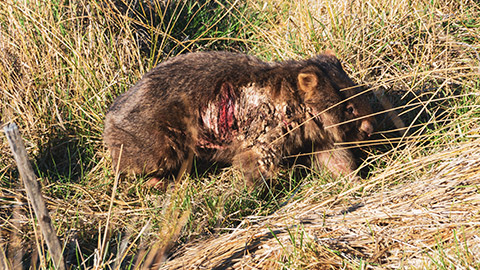
Lice are a type of insect (six-legged invertebrate) that infect mammals and birds. They cling to hair and feather and feed on blood, skin secretions and dead skin. They make the skin itchy, and in severe cases, lice can cause hair loss skin scarring or even death. Lice are also vectors for infectious disease, such as trench fever.
Lice eggs (or nits) are very sticky and difficult to remove from hair and feather fibres. Adults and eggs may also live for short periods on bedding and other items in contact with infected animals. Effective treatment includes the treatment of the infected animals, any contact animals and the animals’ environment (Thomas 2016).
You often need to spread the animal’s hair or fur apart to see the lice at the base of the hair follicle.
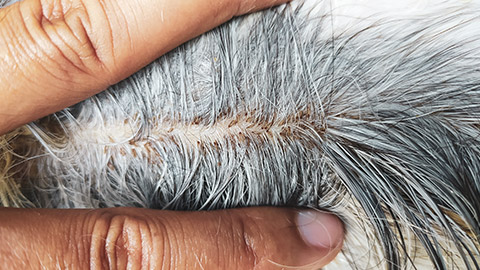
Ticks are related to mites and are another type of arachnid. Like mites, ticks parasitise all classes of vertebrate animals. There are hundreds of species of ticks, but they are all blood sucking parasites and vectors of many diseases.
Tick paralysis is caused by toxins in the saliva of several different species of tick. However, the species common to the east coast of Australia, Ixodes holocyclus, “causes the most severe form of tick paralysis, with a mortality of as much as 10% in dogs (usually 4%–5%)” (Atwell 216).
If left alone, ticks will fall off once they are full of blood. However, the longer the tick is attached to the host, the more likely it will transmit an infectious disease to the host or cause paralysis. Most vets recommend removing the tick as soon as possible.

Fleas are small, parasitic insects that feed on the blood of mammals and birds. There are thousands of species of fleas. Fleas cause skin irritation and are also vectors for other pathogens, such as Bartonella spp. Flea eggs tend to fall off the host and hatch 1-6 days later. This means effective treatment requires bedding, brushes and tack needs to be treated as well as the infected animals.
Flea allergy dermatitis (FAD) or flea bite hypersensitivity is caused by the saliva of fleas entering the body of the host. FAD is common in cats and dogs and presents as follows:
- In dogs - itchy skin and scabby lesions on the lower back, tailhead and inner thighs in dogs
- In cats – itchy skin and small bumps around the face, neck and back (Dryden 2021).
Vectors
A vector is any animal that spreads an infectious disease from one animal to another. The vector is typically not affected by the disease. Many vectors of animal disease are invertebrates. Many external parasites also act as vectors. For example, Bartonella henselae and Rickettsia felis, bacterial species that cause cat-scratch disease and cat flea typhus respectively, can be spread by fleas (Vet Practice 2021).
Non-infectious health problems
Non-infectious diseases cannot spread from one individual to another. Non-infectious health problems include:
- Allergies, such as contact allergies, allergies to food and medication, and flea allergy dermatitis (FAD)
- Genetic diseases, such as hip dysplasia in dogs
- Cancers, including neoplasms (abnormal tissue growth)
- Malnutrition due to jaw injury, anorexia or poor diet
- Chemical poisoning, such as ammonia poisoning in fish or lead toxicity in birds
- Autoimmune diseases, such as diabetes
- Musculoskeletal conditions or injuries.
Treatment of non-infectious health problems depends on the specific health concern and the animal involved. Some non-infectious diseases, such as diabetes, require ongoing treatment to manage the symptoms and prevent deterioration.
Preventative and maintenance health care
Several common health care treatments are routinely performed on animals to prevent health problems. These preventative treatments are typically less invasive than treating the health problem that may arise without preventative measures. Preventative health care can help prevent both infectious diseases and non-infectious health problems.
Common preventative and maintenance health care includes:
- Vaccination
- Internal parasite control, such as heartworm and intestinal worms
- External parasite control, such as mites, ticks, fleas and lice
- Nail/claw trimming and hoof care
- Dental/oral care
- Bathing, clipping and grooming
- Eye and ear cleaning
- Expressing of anal glands (EAGs)
- Providing medication for ongoing or chronic conditions.
Vaccination

Vaccination is the most common way to prevent infectious diseases. Most domestic animals have a recommended vaccination schedule to follow throughout their life. The specific vaccines and when they should be administered will depend on the species of animal, the individual’s life stage and risk of particular diseases.
It is generally not recommended to give vaccines during pregnancy, unless specifically indicated in the SDS. In particular, modified live virus vaccines should be avoided. Ideally, the female should be fully vaccinated with their core vaccines before breeding. If the standard vaccination schedule has been followed, the mother’s immunity will be able to provide adequate immunity for the offspring via colostrum in the milk (Day et al. 2016).
Access and read the WSAVA Vaccination Guidelines to learn more about evidence-based veterinary medicine and how it relates to vaccinations for cats and dogs, the different types of vaccines and vaccination guidelines for cats and dogs.
Select each of the following headings to see three basic examples of vaccination schedules for different animals.
In Australia, it is recommended that all dogs are vaccinated against canine distemper (CDV), canine parvovirus (CPV) and canine hepatitis (ICH). Depending on where the dog lives and its risk of other diseases, the vet may recommend the C3, C4, C5 or C7 vaccine.
The common vaccination schedule for dogs is as follows:
- For puppies at:
- 6-8 weeks
- 10-12 weeks
- 14-16 weeks.
- For adult dogs:
- 12 months after last puppy vaccination
- Ongoing – The vet will recommend an ongoing vaccination schedule based on the dog’s lifestyle and environment and brand of vaccine used (Petbarn 2018).
Read the Example of Vaccination Schedule for Broodmares provided in the MSD Veterinary Manual for an example vaccination schedule for pregnant horses. You can use the hyperlinks in the schedule to learn more about individual vaccines and the diseases they protect horses from.
Meat &Livestock Australia (2021) recommend that sheep are vaccinated against the following diseases:
| Disease | Schedule |
|---|---|
| Clostridial plus cheesy gland | Two doses at least four weeks apart in lambs, annual boosters for adults |
| Scabby mouth | Single dose for life |
| Ovine Johne’s disease | Single dose for life |
| Campylobacter abortion | Two doses at least three weeks apart in lambs, annual boosters for adults |
| Erysipelas arthritis | Two doses at least 3–4 weeks apart |
| Footrot | Two doses 3–4 weeks apart or at least six weeks apart, depending on the vaccine chosen |
Read the Vaccination in sheep flocks (pdf) fact sheet to learn more about the vaccines that are recommended to protect sheep from the diseases listed in the previous table.
Case study: Thumper the rabbit

Thumper is a 10-year-old Mini lop rabbit living in Victoria. Wild rabbits are a pest species in Australia and are illegal to have as pets in some states. Wild rabbits are controlled by two viruses – Calicivirus and Myxomatosis. Pet rabbits are susceptible to both infectious diseases. However, it is currently illegal to vaccinate against Myxomatosis in case a vaccinated rabbit accidentally breeds with it and helps build immunity in the wild population.
To protect Thumper from Calicivirus, his owner has had him vaccinated once a year with the Filavac VHD K C+V vaccine since Thumper was 10 weeks old (AVA 2011).
Health care for different life stages
As an animal progresses through its life stages, the specific preventative and maintenance health care requirements and schedules are likely to change. For example, dogs “should be wormed every two weeks until twelve weeks of age, then monthly until six months of age. After six months all dogs need to be wormed every three months for effective protection” (Vetwest Animal Hospitals n.d.a).
Some non-infectious health issues, such as arthritis and heart disease, are more likely in senior animals than in other life stages and so only require preventative treatment as the animal approaches that life stage.
While most vaccinations and parasite treatments are safe for pregnant and lactating animals, some medications, such as anti-inflammatories and some antibiotics and antifungals, may be harmful to either the mother or the young.
Cats and dogs are generally accepted to have the following four life stages:
- Kitten or puppy – the first 1-2 years of life is the significant growth period for these animals.
- Adult – the years when the animal is fully grown but before it begins to experience the effects of old age.
- Senior – the start of this stage depends on life expectancy. In general, the senior phase of life starts around:
- 7-9 years old in cats
- 12 years old in small dog breeds
- 10 years old in medium dogs
- 8 years old in large dogs.
- Pregnant or nursing – in the last trimester of pregnancy and in the lactation period.
Knowledge check 3
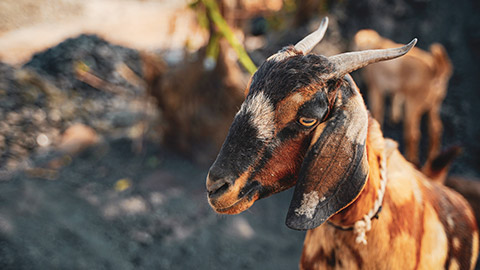
Common safety and animal welfare risks
Before you even approach an animal, it is critical that you have considered the safety and welfare of the animal as well as the potential safety risk to you and any other staff. In an animal health care facility, common safety and animal welfare risks relate to:
- Animal handling
- Biological hazards, including zoonotic diseases and body fluids
- Hazardous substances
- Radiation
- Sharps
- Manual handling and work postures
- Slips, trips and falls
- Noise.
Animal handling
The main risk of working in an animal health care clinic is handling animals because animals are unpredictable, especially when they may be injured or sick.
To minimise the risk to yourself and to uphold the animal welfare principle that animals should not suffer pain, fear or stress, only handle animals when absolutely necessary. When you do handle an animal, make sure to use the appropriate humane and low stress techniques for that animal.
Avoiding incidents with animals can be managed by:
- Assessing the animal’s state before attempting to handle it
- Using appropriate personal protective equipment (PPE)
- Using appropriate handling equipment
- Using appropriate handling techniques
- Experience.
We will discuss how to assess the animal’s temperament and behaviour as well as appropriate handling and restraining techniques later in this module.
Once you have been properly trained and gained more experience, you will be more capable of approaching an animal confidently and calmly.
Biological hazards
Recall that zoonotic diseases are infectious diseases that can be transmitted from animals to humans. It is important that all animal carers are aware of these diseases and can guard against them. Common zoonotic diseases in Australia include:
- Leptospirosis – a bacterial infection (Leptospira spp.) spread by contact with animal urine, such as infected dogs, pigs, cattle and rodents (NSW Health 2021)
- Psittacosis – a bacterial infection (Chlamydophila psittaci) transmitted by birds (NSW Health 2018)
- Q fever – a bacterial infection (Coxiella burnetiid) most commonly transmitted by cattle, sheep and goats (NSW Health 2019). People are at the highest risk of contracting Q fever when assisting with a caesarean birth and so are commonly vaccinated before they are allowed to assist.
Protecting yourself from zoonosis
While different zoonic diseases can be transmitted in different ways, the following are common ways to minimise the risk of transmission of most forms of zoonosis:
- Wash your hands and arms thoroughly after handling animals, even if you wear gloves
- Wear gloves, goggles and an apron or other protective clothes
- Cover any open cuts or scratches with waterproof dressings
- Wear a properly fitted P2/N95 face mask
- Wash surfaces and equipment thoroughly after use, especially if in contact with blood, urine, faeces or other bodily fluids (NSW Health 2018, 2019 and 2021).
Vaccinations are also available for many zoonotic diseases and are recommended for people working in high-risk roles or workplaces. However, even if you are vaccinated, you should still follow appropriate procedures to avoid contact with zoonotic pathogens.
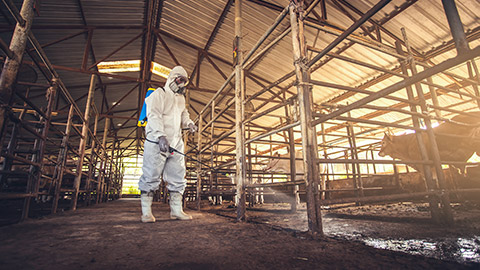
Hazardous substances
Many hazardous substances can be found in an animal health care workplace, including:
- Animal medications
- Anaesthetics
- Sterilising chemicals
- Cleaning products
- Solvents.
Some of the main risks that can come from accidental exposure to hazardous substances can include:
- Poisoning
- Chemical burns
- Eye irritations
- Respiratory problems
- Skin conditions.
You must ensure hazardous substances are used according to the manufacturer's or supplier's written instructions, in the form of a safety data sheet (SDS), and that safe working procedures are followed at your workplace. Ensure you know where to access the SDSs for the substance you are working with.
Hazardous substances must be stored securely and labelled clearly. A number of the substances used in animal care practice must be kept in locked storage and accessed only by animal care practitioners. They may include medications and dangerous drugs.
Your clinic will have policies and procedures related to the storage and handling of dangerous chemicals and drugs, and you should ensure you know what these are and the level of responsibility you have for handling them.
Radiation
The use of x-ray equipment in animal care clinics is common and understanding the associated risks when working with radiation and how to reduce these risks is very important. Only qualified persons (holding a radiation license) are allowed to physically press the exposure button to take the x-ray. However, animal attendants and nurses will be involved in the positioning, restraining and monitoring of animals during the procedure.
Ideally, chemical restraint (anaesthetic or sedation) should be used along with manual restraints such as ties, tapes and other positioning aids. Using both types of restraint means that all staff can leave the room during the imaging and reduce their exposure to radiation.
When sedation or anaesthetic is detrimental to the animal’s health, physical manual restraint by a staff member may be required. Each staff member must be protected with appropriate shielding devices (lead-lined gloves and apron) and positioned so that no part of their body is in the path of the x-ray beam.
Radiation exposure must be monitored for any workers involved in using x-rays. For example, warning signs must be displayed, and Personal Radiation Monitoring devices must be worn at all times when in the clinic. When using the x-ray machines, you must follow the state and territory legislative requirements as well as the Australian Animal Care Association Guidelines.
Sharps

There are many types of sharp instruments in an animal health care clinic including syringes and scalpels.
Sharps must always be disposed of in a clearly labelled and appropriate sharps disposal container. These containers should be replaced once they have reached a certain level of capacity. This is to prevent people from trying to force used sharps into an almost full container which can lead to injuries. Sharps should be placed in the sharps disposal containers using supplied handling tools, not with hands.
Manual handling
Manual handling is a part of almost every job. However, in an animal health care workplace, manual handling may be quite common. Manual handling could include:
- Lifting animals
- Replenishing stocks of food
- Stacking boxes.
At times, your work tasks may involve bending, stretching, twisting, or working with heavy, large or awkward loads. Make sure you lift objects or animals correctly, according to workplace procedures, and seek assistance when the load is too heavy, large or awkward for one person to lift by themselves.
Slips, trips and falls
Slips, trips and falls are common in most workplaces. To minimise the risk of injury, ensure that you wear closed-in shoes with appropriate tread for good grip. Preparing and maintaining the area is also important. Spills are common, so ensure all surfaces are clean and dry. Your workplace should have procedures for reporting and cleaning up spills (Philpott n.d.).
Noise
Working with animals can be very noisy, especially when working with large numbers of barking dogs. Where possible, ear protection, such as ear plugs or earmuffs, is recommended. Try to minimise your time spent in situations where the noise is very loud.
Where to find WHS information
You will be able to access WHS information in several ways in the clinic. These sources may include:
- Clinic policies and procedures
- Intranet
- Posters
- Induction package
- Veterinarian
- Practice Manager.
If you cannot find the information you need, then please check with your supervisor for further information.
Reporting hazards
It is important that you familiarise yourself with your workplace policies and procedures regarding raising WHS concerns. Each workplace is different, so it is important to be familiar with the processes that must be followed at your workplace.
When you need to raise issues, you should follow the workplace policies and procedures for reporting issues and concerns. However, if a matter is not resolved, then you will have the option of submitting a complaint to your State or Territory WorkCover authority.
Risks to the animal
There are also risks to the animal’s welfare to consider as well. Although providing health care to an animal is necessary for its well-being, being handled can be very stressful for an animal. This is particularly true for animals that are already stressed due to poor health or injury.
In extreme cases, the stress of being handled may cause the animal to go into shock – where the blood flow around the body suddenly reduces. The reduced blood flow can cause further problems for the animal as tissues and organs do not receive the oxygen and nutrients they require from the blood.
Improper handling may also cause the animal an injury or, in the worst-case scenario, even death.
To minimise the risk of injury or shock, it is best to minimise your time handling the animal and to ensure you follow the proper, best-practice handling techniques.
Hand hygiene and handwashing
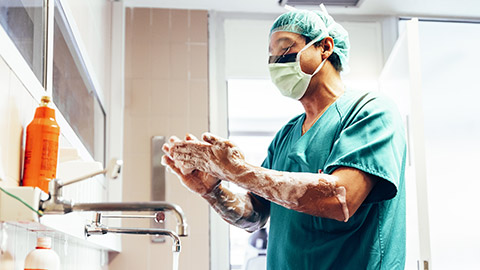
Hand hygiene is critical in animal health care. Hand hygiene is the general term applied to washing your hands.
Wearing gloves is not a substitute for effective hand washing(Phillips n.d.)
Phillips (n.d.) states that you should wash your hands:
- “Immediately when you arrive at work.
- At all 5 points of contact with patients (5 Moments for Hand Hygiene).
- After touching any instrument or object that might be contaminated with blood or other bodily fluids, or after touching mucous membranes.
- After you handle blood, urine or other specimens [such as faeces].
- After removal of gloves.
- Before and after using the toilet.
- Before eating or drinking.
- Before leaving work.”
The World Health Organization (WHO) identifies five moments for hand hygiene, which also apply to animal health care.
The five moments are:
- Before touching a patient - to protect the patient from pathogens you may be carrying on your hands.
- Before clean/aseptic procedures - to help protect the patient from pathogens entering their body.
- After exposure to or risk of exposure to body fluid - to protect yourself from any pathogens from the patient and to prevent spreading pathogens.
- After touching a patient - to protect yourself from any pathogens from the patient and prevent spreading pathogens.
- After touching the patient’s surroundings - to protect yourself from any pathogens from the patient and to prevent spreading pathogens.
How you wash your hands will depend on the task you are about to perform. The four types of hand hygiene are:
- Routine handwash
- Antiseptic hand rub
- Antiseptic handwash
- Surgical antisepsis (Martin 2021).
Routine handwash
Routine handwashing is when you wash your hands with non-antimicrobial soap and water. Routine handwashing is appropriate for animal health care tasks with minimal risk of exposure to pathogens or contaminants.
You should use a routine hand wash before and after low-risk tasks such as:
- securing, transporting and restraining healthy animals
- completing reception duties
- before and after preparing food for animals
- grooming an animal
- handling chemicals or medications
- cleaning low-risk areas, such as product shelving and windows
- eating your own food.
When conducting a routine handwash you should:
- Use soap and clean, running water
- Remove rings and jewellery or move them to wash underneath
- Rub your hands for at least 30 seconds to remove any particles and microorganisms
- Where possible, use disposable paper towel to dry your hands and use the towel to turn off the tap
- Ideally, use liquid soap and wash the dispenser before refilling (Martin 2021).
Examine the following video, ‘Hand Hygiene in Veterinary Practice presented by the Bella Moss Foundation’ (2:49 min), to learn more about the 5 Moments for Hand Hygiene and the correct way to wash your hands in a routine handwash.
Antiseptic hand rub
Antiseptic hand rub cleans your hands with an alcohol-based gel instead of soap. Unlike soap, you do not rinse the hand rub off with water. Instead, any excess gel evaporates. Antiseptic hand rub is often used when clean running water is not available.
It is important to remember that antiseptic hand rub won’t clean your hands. It sanitises them. So, if your hands are dirty or you have come into contact with a substance, such as a faecal sample, you will need to wipe your hands clean before applying the hand rub.
When using antiseptic hand rub:
- Remove all jewellery.
- Apply the manufacturer’s recommended quantity into a cupped hand.
- Rub the palms of your hands together.
- Rub your right palm over the back of your left hand with fingers interlaced and vice versa.
- Rub between your fingers by interlacing your fingers, palm to palm.
- Rub the backs of your fingers by interlacing your finger, right palm to the back of your left hand and vice versa.
- Rub your right thumb by clasping it in your left hand and rotating, and vice versa.
- Rub your hands by rotating and rubbing backwards and forwards with clasped fingers of the right hand in the left palm and vice versa.
- Continue to rub your hands together until they are dry. Do not rub or wash off excess product (Martin 2021).
Antiseptic handwash
The third hand hygiene routine is known as an antiseptic handwash or the clean technique. This type of hand hygiene uses antimicrobial soap and clean water and is used to remove or destroy any microorganisms that may be present on your hands.
You should perform an antiseptic handwash in situations such as:
- before clipping fur and preparing skin for surgery
- after exposure to an animal with a confirmed or suspected zoonotic or contagious disease
- after exposure to blood or other bodily fluids
- after cleaning litter trays or disposing of faeces
- after handling pathology samples.
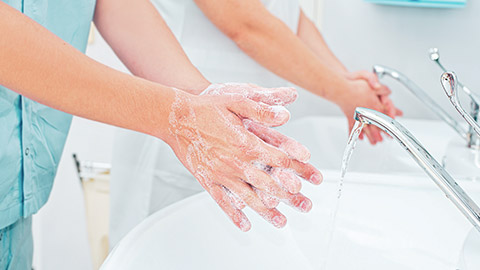
When using the antiseptic handwash routine, remove any jewellery then:
- Wet your hands and wrists. Position your hands lower than your elbows to allow water to flow towards the fingertips.
- Cover all areas of hands with soap.
- With firm rubbing and circular motions, wash the palms and backs of your hands, every finger individually, your wrists and forearms. Continuously rub your hands, wrists and forearms for at least 30 seconds.
- Rinse thoroughly with clean water by letting the water flow from your forearms towards your fingertips.
- Using paper towel, pat your hands dry, beginning with your fingers and moving upward towards your forearms. Dispose of the used paper towel immediately.
- If you need to turn the water off with your hands, use a piece of clean paper towel (Martin 2021).
Surgical antisepsis
Surgical antisepsis, or the sterile technique, is the fourth hand hygiene routine. As with antiseptic handwashing, surgical antisepsis uses antimicrobial soap. However, surgical antisepsis uses sterile water instead of tap water, involves a scrubbing brush, takes around 5 minutes to perform instead of 30 seconds and you hold your hands higher than your elbows rather than the other way around.
As the name suggests, surgical antisepsis is typically used before performing surgery.
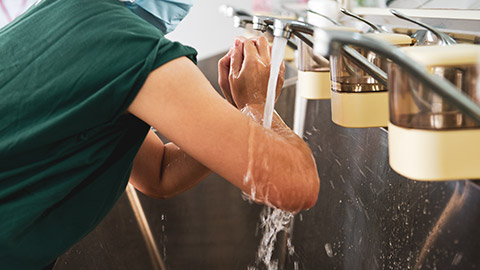
The key steps of the surgical antisepsis handwashing technique are:
- Remove all jewellery.
- Wet your hands with sterile water at or close to body temperature (approximately 37°C).
- Wash your hands using antimicrobial soap and/or povidone-iodine.
- Clean under your fingernails with a nail file.
- Hold your hands higher than your elbows at all times to prevent bacteria-laden soap and water from dripping down and contaminating your hands.
- Scrub each side of each finger, between your fingers, the fronts and backs of both hands, both wrists and both forearms for at least 4 minutes.
- Rinse your hands, wrists and forearms by passing them through running water, making sure the water only flows in one direction - from fingertips to elbow.
- Enter the operating room holding your wet hands above your elbows.
- Dry your hands and arms using a sterile towel and observe the aseptic technique (Martin 2021).
Study the following video, “Anatomical Surgical Hand Scrub” (5:09 min), which demonstrates excellent antisepsis handwashing technique.
PPE appropriate for animal health care
PPE is the equipment used or worn by a person to minimise the risk of health and safety hazards. PPE appropriate in the health care of animals includes items such as:
- protective footwear
- face masks
- goggles or other eye protection
- gloves
- aprons, scrub tops or gowns.
Your workplace will have procedures related to the types of equipment you need to wear in order to stay safe at work and when to wear it. Always ensure you wear the equipment correctly and ensure it is correctly fitted to provide the maximum level of safety for the task.
Some workplaces categorise health care situations into tiers as a basic guideline of the PPE required for the task. The following table outlines the typical PPE recommended by WorkSafeQueensland (2018) for each of the three tiers.
| Tier | Descrition of Tier | Recommended PPE |
|---|---|---|
| Tier 1 | Healthy animal – non-invasive procedure |
|
| Tier 2 | Healthy animal – invasive procedure or expecting contact with blood and body fluids |
|
| Tier 3 | Animal known to be sick |
|
Appropriate PPE for assisting in the heath care of horses
The specific PPE you require will depend on the health care task you are performing. For example, the PPE appropriate for the person restraining an animal will differ from that required for the person performing an anal gland expression.
WorkSafe Queensland (2018) outlines the following items of PPE to wear when assisting in the health care of horses in the article ‘Selecting and using PPE in veterinary practice’.
| PPE item | Purpose | When to use |
|---|---|---|
| Disposable gloves |
|
Wear when:
|
| Safety goggles/glasses, surgical mask or face shield |
|
Wear when:
|
| Respiratory protective equipment (RPE) |
|
Wear when:
|
| Reusable overall/coveralls or disposable gowns and overalls |
|
Wear when:
|
| Rubber boots, shoe/boot covers or steel-capped boots |
|
Wear when:
|
Review the following video, ‘PPE for equine veterinarians’ (5:23 min), for a more detailed explanation of the PPE required and how vets think about PPE when they perform health care tasks on horses.
It is critical for you to read and understand the safety guidelines of any product or equipment you use for specific instructions around PPE and hand hygiene. If you are unsure what is required, check with your supervisor.
Knowledge check 4
Prepare health care work area, equipment and supplies
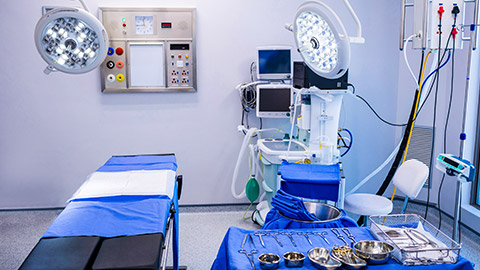
Preparing the work area and setting up all equipment before you start a procedure or exam is very important. It is unprofessional and inefficient, and the animal can become distressed if you are constantly going in and out of the work area gathering equipment.
The three main steps in preparing the health care work area are:
- Ensure the area is clean and ready for use.
- Gather all equipment, utensils, products, restraint materials and PPE appropriate for the task.
- Check all equipment to ensure it is in good working order.
- Check the expiry dates and packaging of supplies for signs of damage or contamination.
- Prepare the area:
- Ensure all utensils and equipment are laid out within easy reach.
- Ensure the surface to be used is ready for the animal. For example, consider how messy the procedure will be. If the surface is slippery or cold, you may need to place a towel, blanket or non-slip covering on the surface.
Select each of the following headings to see the equipment and supplies typically required for each listed procedure, some of which you may need to administer as part of your work placement and assessment.
- PPE – closed-in shoes, scrub top or apron and disposable gloves
- Thermometer, probe cover and lubricant
- Stethoscope
- Otoscope and earpieces
- Scales
- Flea comb
- Sterile sample jar in case a faecal sample is taken
- Restraint devices, such as a lead, muzzle and/or towel, if required
- Pen and paper or access to patient computer file or cage card
- PPE – closed-in shoes, scrub top or apron and disposable gloves
- Restraint devices, such as a towel, if required
- Pen and paper or access to patient computer file or cage card
- Topical preparation
- PPE – closed-in shoes, scrub top or apron and disposable gloves
- Restraint devices, such as a towel, if required
- Pen and paper or access to patient computer file or cage card
- Correct eye drop product for the animal
- PPE – closed-in shoes, scrub top or apron and disposable gloves
- Restraint devices, such as a towel, if required
- Pen and paper or access to patient computer file or cage card
- Correct medication for the animal
- Food/treat to disguise the tablet or a syringe to administer liquid medication
- Pill popper (optional)
- PPE – closed-in shoes, scrub top or apron and disposable gloves
- Pen and paper or access to patient computer file or cage card
- Correct water additive for the animal
- Clean water bowl
- PPE – closed-in shoes, scrub top or apron, disposable gloves and eye protection, such as goggles
- Restraint devices, such as a lead, muzzle and/or towel, if required
- Pen and paper or access to patient computer file or cage card
- Correct ear-cleaning solution for the animal
- Cotton wool and/or swabs
- Towel to wrap around patient and dry them after the treatment
- PPE – closed-in shoes, scrub top or apron and disposable gloves
- Restraint devices, such as a towel, if required
- Pen and paper or access to patient computer file or cage card
- Correct toothpaste and toothbrush for the animal
- PPE – non-slip shoes, scrub top or apron and disposable gloves
- Restraint devices, such as a slip lead or cat bag, if required
- Pen and paper or access to patient computer file or cage card
- Correct shampoo for the animal
- Sponge/exfoliating gloves/silicon brush
- Bath/hydrobath
- Towel
- PPE – closed-in shoes, scrub top or apron and disposable gloves
- Pen and paper or access to patient computer file or cage card
- Correct mite spray for the animal
- PPE – closed-in shoes, scrub top or apron and disposable gloves
- Restraint devices, such as a towel, if required
- Pen and paper or access to patient computer file or cage card
- Scalpel
- Paraffin oil
- Microscope slides
- Pencil (to write patient details on slide)
- Electric clippers
- PPE – closed-in shoes, scrub top or apron and disposable gloves
- Restraint devices, such as a muzzle or towel, if required
- Pen and paper or access to patient computer file or cage card
- Blood collection tubes, already labelled
- Electric clippers with size 10 blade attached
- Swabs
- Cotton wool or swabs with antiseptic on them
You must follow instructions given by your supervisor on how to set up the equipment ready for use or read the instruction manuals provided. Failure to do so can result in equipment malfunction, equipment damage or breakage, or injury to you, the animal and other staff.
Knowledge check 5
